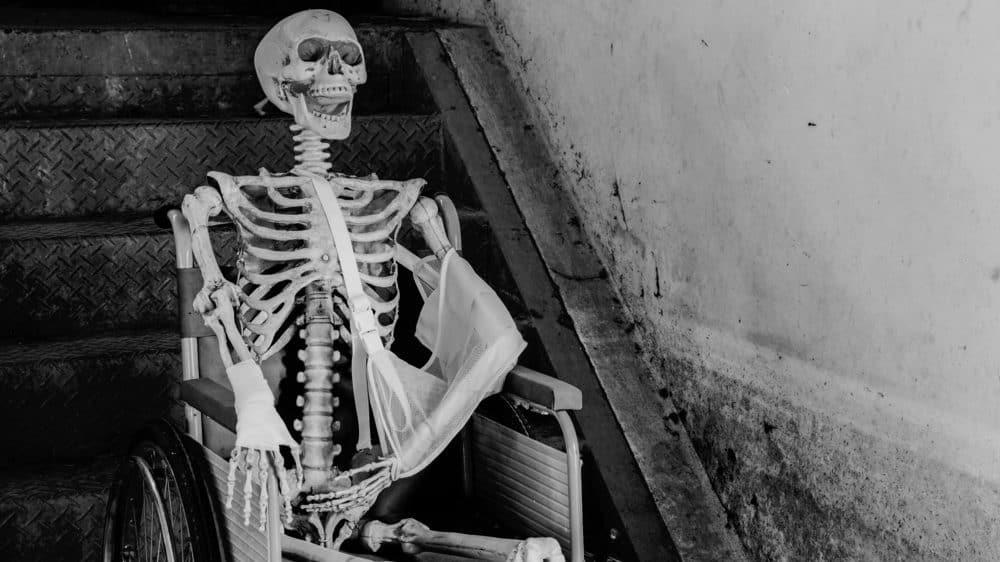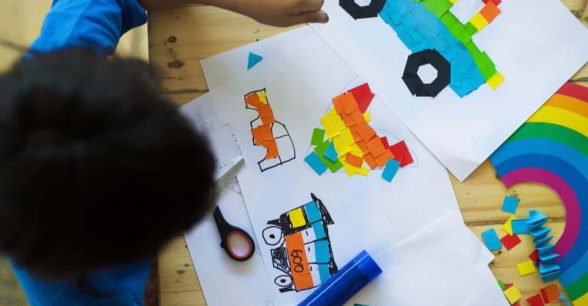Disability Isn’t a Halloween Costume
Last year, a friend who hadn’t seen me in a few years asked whether my bright, sparkly purple cane was part of my sense of style. I dress whimsically in colorful outfits with a lot of patterns and he’d never seen me use my cane before, so I explained that I started using it because of a disability.
But there have also been situations where I’ve been asked by complete strangers if my cane is a part of a costume or my fashion and if I “really need it.”
When Halloween season is in full swing, I’m less likely to be given any space while I’m walking through a crowd with my cane or offered a seat on public transportation. I have no way of knowing if that’s because so many other people are wearing disabilities as Halloween costumes or not—but it certainly seems that way.
“My wrist braces are the only visible indication of my disability,” says Ashley, who works in technology. “When people assume I’m wearing them for fashion, I have to be vocal several times a day about getting a seat, getting assistance in train stations or airports, taking a bit more time to get up, and not getting shoved or grabbed.” Ashley has commonly seen wrist braces used as part of Halloween costumes.
There’s nothing wrong with making your mobility aid or assistive device or disability a part of your costume if you actually have a disability, but it becomes an issue when non-disabled people treat things like canes, eye patches, and mental illness like costumes that can be put on for a night.
“The problem arises that by singling out an entire set of humans based solely on their mental illnesses or body images that differ from some perceived notion of normal is inherently belittling and ultimately dehumanizing,” explains Oji Dannelley, a professional dancer, freelance writer, and educator who uses a wheelchair. “It is a statement that takes an already marginalized group and turns the reality of their lives into a form of entertainment.”
Walk into any Halloween store and you’re bound to see ableist costumes and props. These costumes are ableist because they assume that non-disabled people will be wearing them for a night or a few and then taking them off. They make light of the reality that disabled people live with—whether it’s fighting for wheelchair access, discrimination against mental illness, or difficulty getting adequate healthcare.
As Danni Green, a professional accessibility specialist, an activist with disabilities, and an Expressive Arts Therapy student in Boston, MA, explains, Halloween costumes generally fall into one of three categories: Something you wish you could be, something scary, or something funny. “When people use accessibility tools as part of their costume, nobody thinks they’re dressing up as something they wish they could be—they’re portraying disability as something scary or something funny, and either way, it’s harmful to real people whose disabilities should be treated as neither scary nor funny,” ze says.
Danni recently watched a video of someone in costume as a famous person who was blind in one eye and wore an eyepatch. Danni says that although ze has a different kind of acquired partial blindness and doesn’t wear an eyepatch, it was upsetting to see the costume. “Losing my vision was one of the most traumatic things that’s ever happened to me,” says Danni. “Is that really a fun costume you want to put on and gallivant around in?”
These costumes impact real disabled people, causing others to question whether our disabilities are a costume or a prop and believing that we don’t actually need a mobility aid or a white cane. These implications are even trickier considering that people with disabilities already are regularly accused of “faking” our conditions, and people often jump to the conclusion that young or ambulatory people don’t need mobility aids.
“I’m still disabled on Halloween,” Danni explains. “If people can’t tell the difference between my real cane and someone’s costume cane, they may not recognize that I really need them to move out of my way or give up a seat on the train.”
Oji often cosplays at science fiction and fantasy conventions as characters who use wheelchairs or incorporates her chair into her costume. “My first year I started with Oracle (a storyline that has BatGirl as a chair user) and people kept asking me, ‘Is that chair PART of the costume?’” Oji says. “The thought that a disabled person would want to cosplay a disabled superhero was not even on their radar.”
For costumes portraying mental illnesses—such as sexy mental hospital patient or anorexia—it further stigmatizes mental health issues. People who receive inpatient or outpatient psychiatric treatment already face serious discrimination and costumes like this perpetuate the false idea that people with mental illnesses are scary or might physically hurt you.
Instead of choosing to support retailers that are selling disabilities as a costume, we should focus our energy on making sure that Halloween and fall seasonal events are accessible for everyone. We can put our efforts into sensory-friendly events, widespread wheelchair access, fragrance-free policies and education, and destigmatizing disability.
About Rooted In Rights
Rooted in Rights exists to amplify the perspectives of the disability community. Blog posts and storyteller videos that we publish and content we re-share on social media do not necessarily reflect the opinions or values of Rooted in Rights nor indicate an endorsement of a program or service by Rooted in Rights. We respect and aim to reflect the diversity of opinions and experiences of the disability community. Rooted in Rights seeks to highlight discussions, not direct them. Learn more about Rooted In Rights




How do you feel about people dressing as pirates, because of the eye patch factor?
You can dress as a pirate without an eyepatch though.